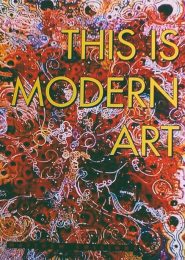Impressionism: Revenge of the Nice (2004)
Let’s dive into the world of Impressionism: Revenge of the Nice, a 2004 documentary that offers a fresh look at the Impressionist movement. This film is not just another art documentary; it’s a journey through the lives and works of four revolutionary artists: Courbet, Manet, Monet, and Cezanne.
Now, why should you care about these artists? Well, they changed the face of modern art. The documentary shows how they broke away from traditional methods to create something entirely new. They focused on color, pattern, and the ordinary life, making art that was accessible and relatable.
But wait, there’s more. The film also explores how the Impressionist movement laid the groundwork for the avant-garde. It’s fascinating to see how what was once considered radical is now revered. The documentary argues that without the Impressionists, modern art as we know it would not exist.
So, what makes this documentary stand out? It’s the way it presents the information. The director, Chris Rodley, and the writer, Matthew Collings, have a knack for explaining complex ideas in a simple way. They make you see the Impressionists in a new light.
And guess what? The contemporary art world, which seems to look down on Impressionism, actually owes a lot to it. The documentary makes a strong case for the importance of the movement. It’s not just about pretty pictures; it’s about a radical shift in how we perceive art and the world around us.
Now, let’s talk about the principles of Impressionism that the documentary unpacks. The strength of color was a big deal. The Impressionists moved away from the dark hues of their predecessors and chose brighter, more vibrant colors. This change was more than just aesthetic; it was a statement about seeing the world in a new way.
The flatness and patterning were also revolutionary. These artists didn’t just paint what they saw; they painted their impressions of it. They weren’t afraid to show the brushstrokes, the texture of the paint on the canvas. This approach was a bold move away from the smooth, almost invisible brushwork of earlier styles.
And let’s not forget the way they captured ordinary life. The Impressionists painted street scenes, cafes, and people just going about their day. This was a big shift from the historical and mythological subjects that were popular at the time. It was a way of saying that everyday life was worthy of art.
In conclusion, Impressionism: Revenge of the Nice is an eye-opener. It challenges the way we think about art and its history. The film is a reminder that the Impressionists were not just nice; they were radicals who transformed the art world. And that’s something worth remembering.




